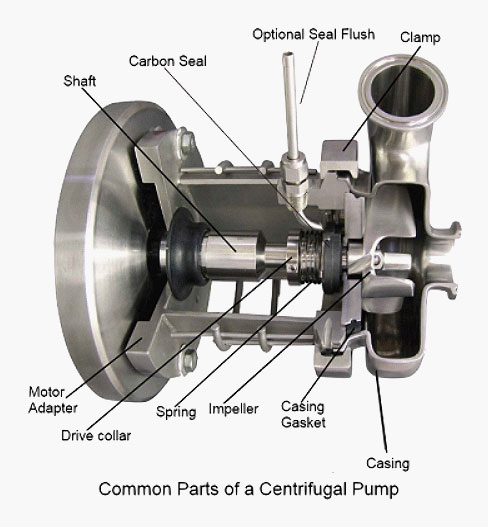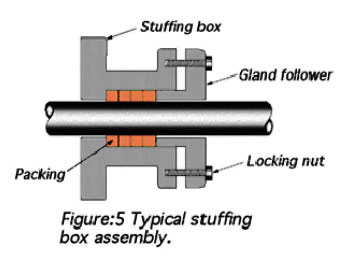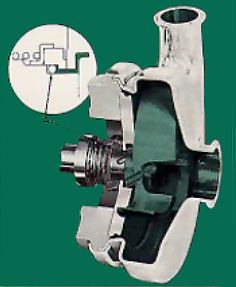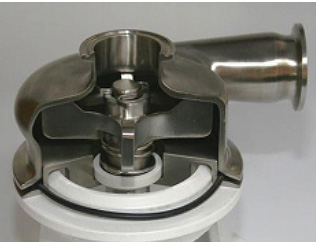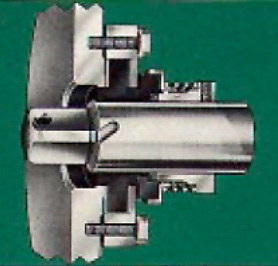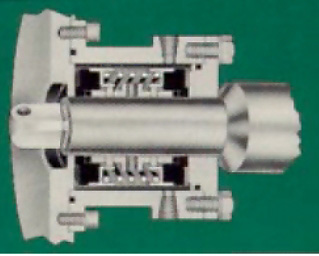The main components in a pump are the casing, impeller, backing plate, shaft and shaft seal, and the motor adapter. Some pumps have the backing plate as part of the casing in which case you would have a removable cover.
Shaft seals
The shaft seals are a critical part of the pump and selecting the right seal is an important step. Old pumps used to be fitted with a packing gland or stuffing box with rows of woven fabric packing that were “stuffed in and tightened on the shaft to make a seal, the same as you would see on a shaft of a ships propeller. This is certainly not a clean or acceptable solution for a brewery.
Now almost all of the pumps have a mechanical seal set up. With a mechanical seal you have a rotating seal which is sealed to and rotates with the pump shaft and a stationary seat the rotating seal rubs against. The rotating seals are usually made of carbon but they are also available I other materials such as Teflon, ceramic and silicone carbide and the stationary seats are usually stainless steel, ceramic or silicone carbide. The rotating seal can be an internal seal in which case it is inside the pump housing and submerged in the liquid or external to the casing behind the pump head.
The big advantage of the external seal is that there are a lot less parts in the product area of the pump and as such it is much easier to clean, an important feature in a brewery application. The example shown for the external seal is a simple “D” style single mechanical seal with a carbon seal which runs directly on the stainless steel back plate.
There are upgrades to this such as:
TYPE “DG” seal has a clamped in ceramic stationary seat
This long lasting seal utilizes the standard “D” type rotating components but has an added stationary seal of ceramic, silicon carbide or tungsten carbide for added wear resistance.
TYPE “F” seal has and added water cascade to clean and cool the seal.
(Shown in the “Common Parts of a centrifugal pump” pictured above)
The flush helps to clean and cool the seal and will extend the life of the seal, especially in applications with high temperatures and abrasive or sticky products.
TYPE “E” seal is a double mechanical seal with a full water flush
The seal assembly is complete in cased in its own seal chamber and is flushed with pressurized water. This seal is idea for slurries, heavy vacuum applications, or extremely hot or tacky products. This would be a good seal for pumping maple syrup or honey for instance.

